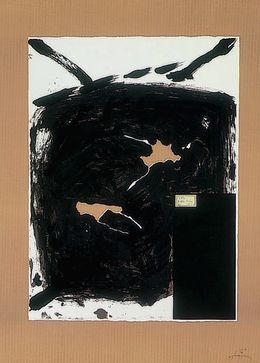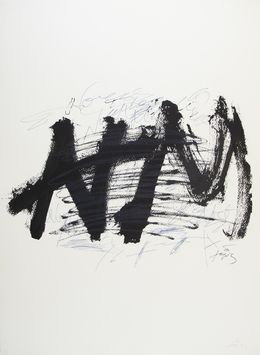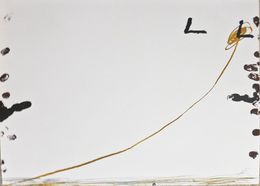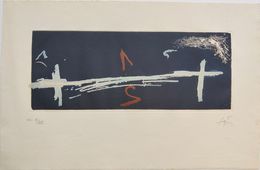






















































Sans Titre (Untitled)
Antoni Tapies
Print - 29.5 x 46.1 x 0.1 cm Print - 11.6 x 18.1 x 0 inch
$1,740






Painting is the most archaic, authentic, and immediate language of man.
Biography
Antoni Tàpies is one of the most iconic painters on the twentieth century Spanish art scene. He died in 2012 in his home city, Barcelona, and left his mysterious paintings, which earned him the Wolf Art Foundation Prize in 1981 and the UNESCO Picasso Gold Medal in 1993, as well as other prizes… He was interested in painting from a very young age, but decided to study law.
Forced to pause his activities for two years due to a lung infection, he used his convalescence to immerse himself into literature and the study of art history, philosophy and Romantic music. The culture he absorbed would strongly influence his creation. In 1942, he suffered from a tachycardia episode, provoking hallucinations, this incident increased his desire to practise his art. He identified with the Dadaist and Surrealist movements and created the movement « Dau al Set », contrary to the Francoist Academy. When he arrived in Paris in 1951, he met the modern artists of the time such as Braque and Chagall, who showed him various techniques: dripping, scraping.
His medical profile evokes that of various figures involved in Art Brut but it is not the only aspect that links him to the movement. In fact, the blending of assembled artistic materials and materials from everyday life is characteristic of Art Brut. With a lack of aesthetic concerns, his work moves towards Arte Povera. His use of waste increased with the emergence of Pop Art, where objects, stripped of soul, were favoured in creation, in response to consumerism in society. He placed great importance on the symbolism of colours, in particular red, omnipresent in his palette, a reminder of the violence of the war. Symbolic elements mar his work: numbers, initials, colours, making them mystical and undecipherable.
Nationality
Categories
Artistic movements
Themes

